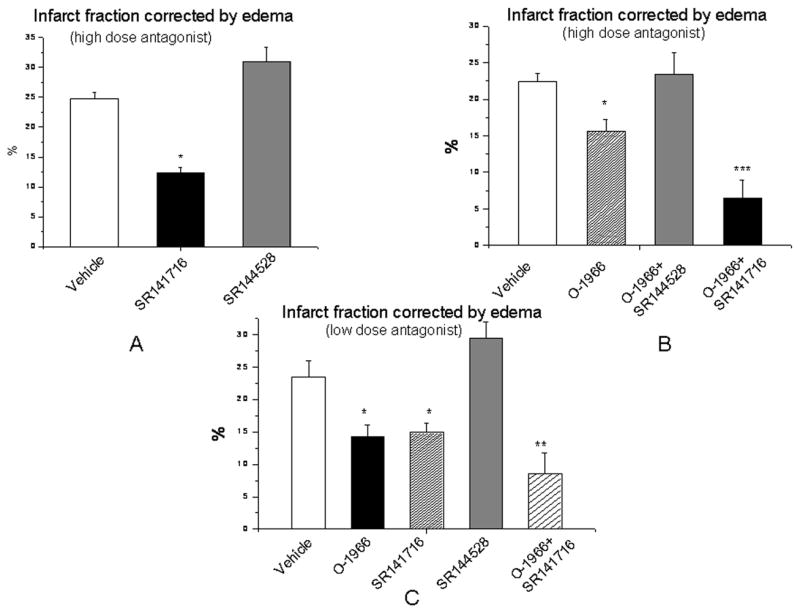Figure 3.

Effects of modulation of CB1 and CB2 receptor activation on cerebral infarction after MCAO. Administration of the CB1 antagonist (SR141716, 20mg/kg, i.p.) 1 hour before MCAO significantly decreased cerebral infarction while administration of CB2 antagonist (SR144528, 20mg/kg, i.p.) alone increased cerebral infarction compared with vehicle-treated group (A). CB2 agonist (O-1966, 1mg/kg, i.v.) alone decreased infarct volume which was completely reversed by CB2 antagonist; while administration of CB2 agonist with CB1 antagonist together dramatically further reduced cerebral infarction following MCAO (B). When the CB2 agonist (O-1966) was administered i.p. and antagonists were given at a lower dosage at 5mg/kg i.p.1 hour before MCAO, both the CB2 agonist and CB1 antagonist still significantly reduced cerebral infarction, while CB2 antagonist tended to increase the cerebral infarction although not achieving statistical significance. The combination of both CB2 agonist (1mg/kg, i.p.) and CB1 antagonist (5mg/kg, i.p.) dramatically reduced cerebral infarction compared to vehicle treated group (C). (n=5–8 in each group, data were expressed as Mean±SEM, *p<0.05 vs vehicle treated control group, **p<0.01 vs vehicle treated control group, ***p<0.001 vs vehicle treated control group)
